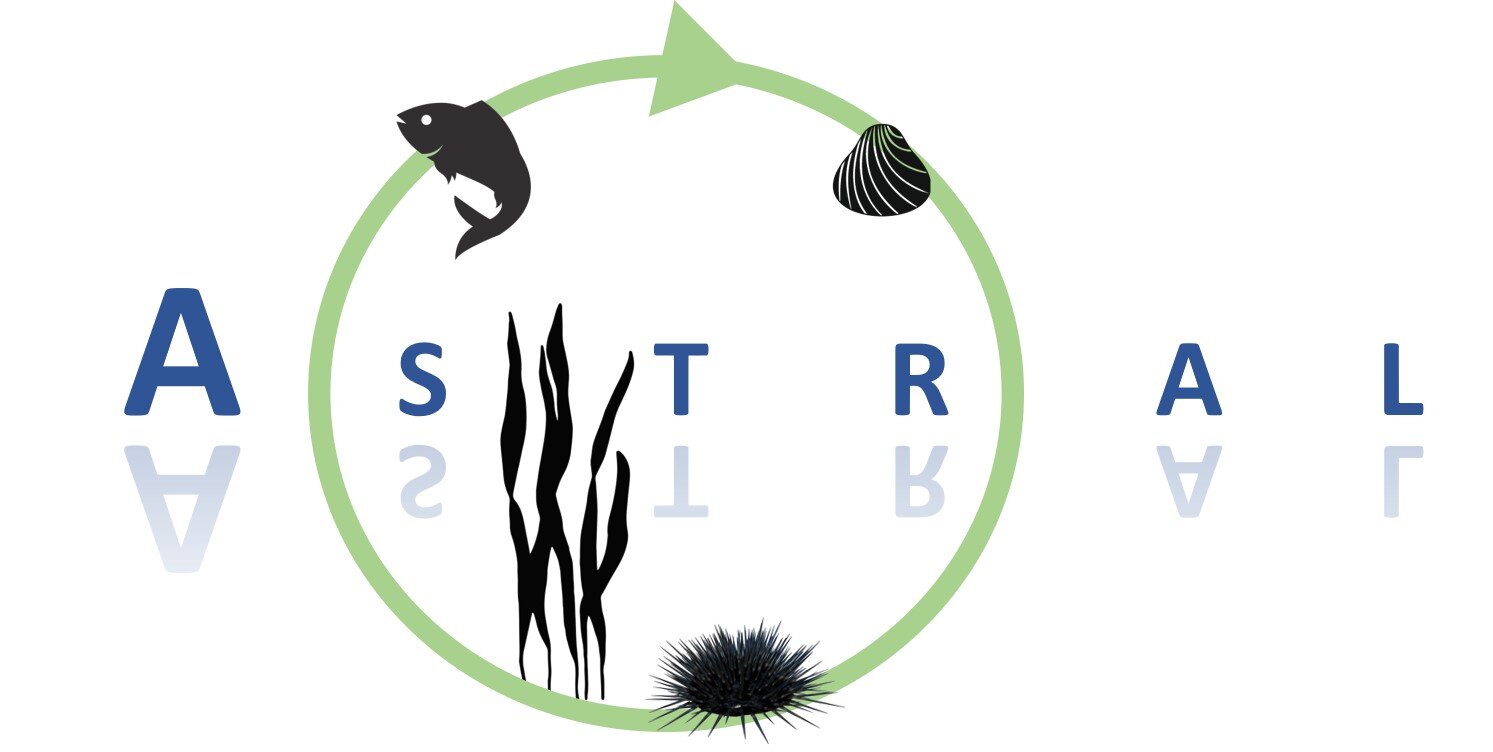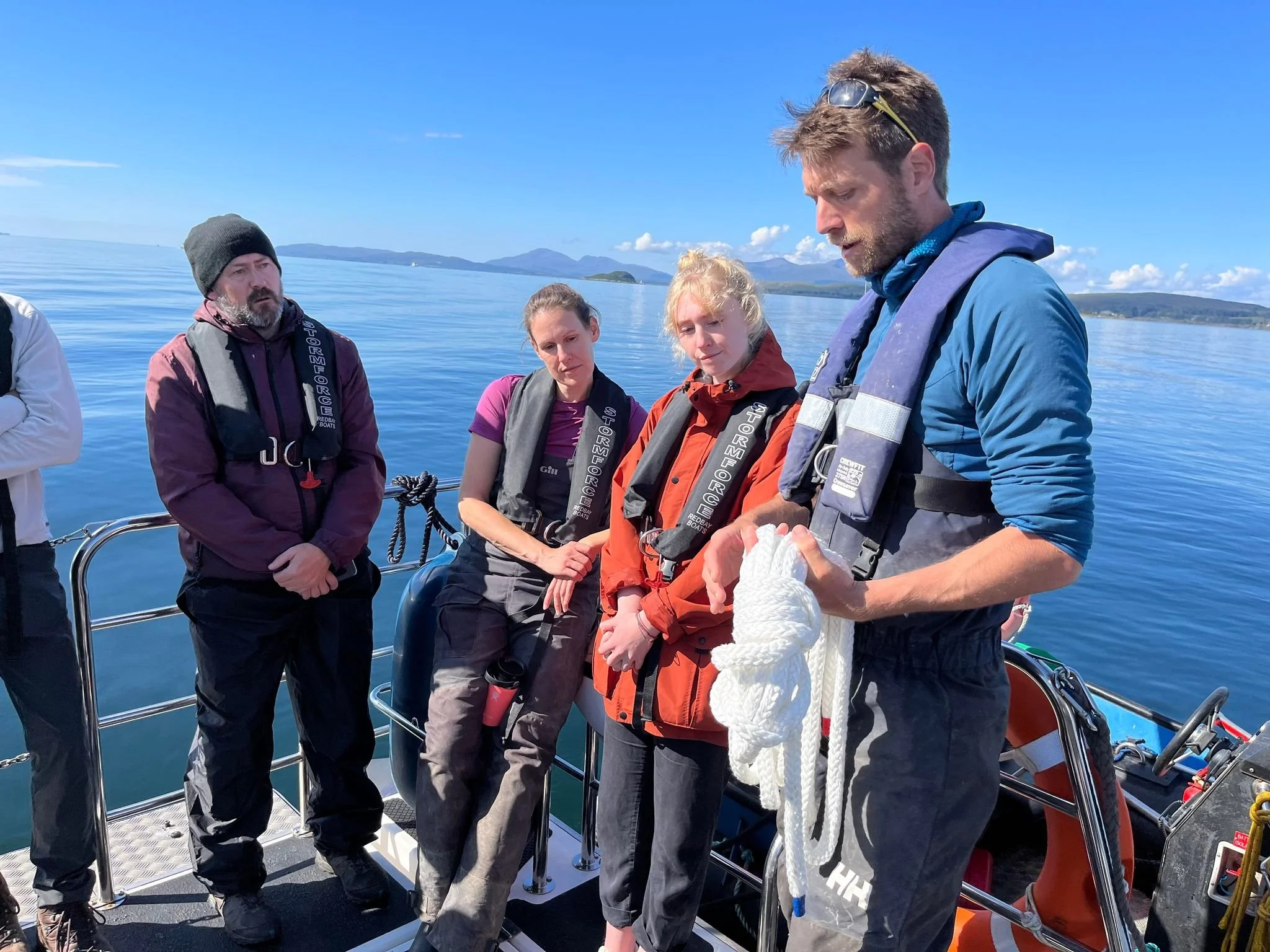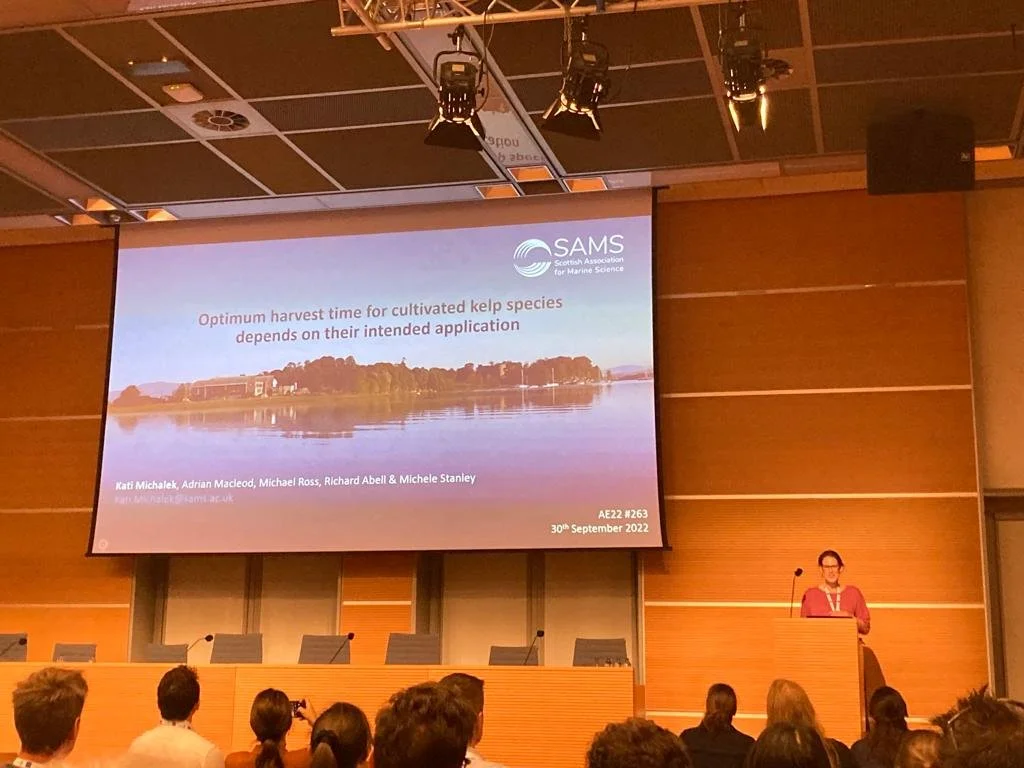IMTA Lab Scotland - Meatier Oysters, More Seaweed and Environmental Monitoring On the Agenda for 2023
ASTRAL has passed the halfway mark and we are looking back at two years of insightful research at Scotland’s IMTA lab, Port a’ Bhuiltin.
Our experimental trials focus on the development and validation of seaweed production methods as well as the potential to integrate other extractive species in support of the sustainable development of the industry.
Our results to date indicate that seaweeds have different environmental needs for growth as the cultivation cycle progresses. This can be exploited by cultivators, for example by adjusting cultivation depth as the seaweed grows to maximise yield and quality of their final harvest.
Additional modifications such as changing the spacing or orientation of grow-out lines are possible to optimise production and continue to be trialled at our site.
In the second half of ASTRAL, we will continue to trial new species groups. We have already introduced native oysters (Ostrea edulis) to our site back in 2020 and found that growing them continuously submerged in the water column (subtidal) produced slightly larger and ‘meatier’ oysters with lower mortalities than in traditional intertidal cultivation.
Our next cultivation season has just commenced and saw the addition of king scallops (Pecten maximus) and red seaweed (Palmaria palmata) to be studied for their cultivation potential and growth performance.
Common sea urchins (Echinus esculentus) will soon follow to assess their potential to reduce biofouling in the shellfish holding baskets. Also, as of November 2022, our data buoy is back at the site, are continuing to monitor the temporal variation of environmental parameters of interest for the cultivation of seaweeds and shellfish.
We continue to share our findings and lessons-learnt by presenting at scientific conferences (e.g. Seagriculture EU and Aquaculture Europe in 2022), delivering lectures in SAMS BSc and MSc study programmes as well as preparing course material and site visits for the SAMS Seaweed Academy.
Figure 2 – Left: Twine-seeding of Saccharina latissima in October 2022 (Image credit: Alistair Lomas, PhD student, SAMS). Right: Routine water sampling in November 2022 with Jenny (SAMS Enterprise) and Ryan (SAMS seaweed nursery manager) (Image credit: Sam Reeves, Seaweed Farm Technician, SAMS).
Figure 3 – Port a’ Bhuiltin site visit as part of the SAMS Seaweed Academy course in September 2022.
Figure 4 – Presenting ASTRAL & IMPAQT project findings at Aquaculture Europe (September 2022, Rimini, Italy)







